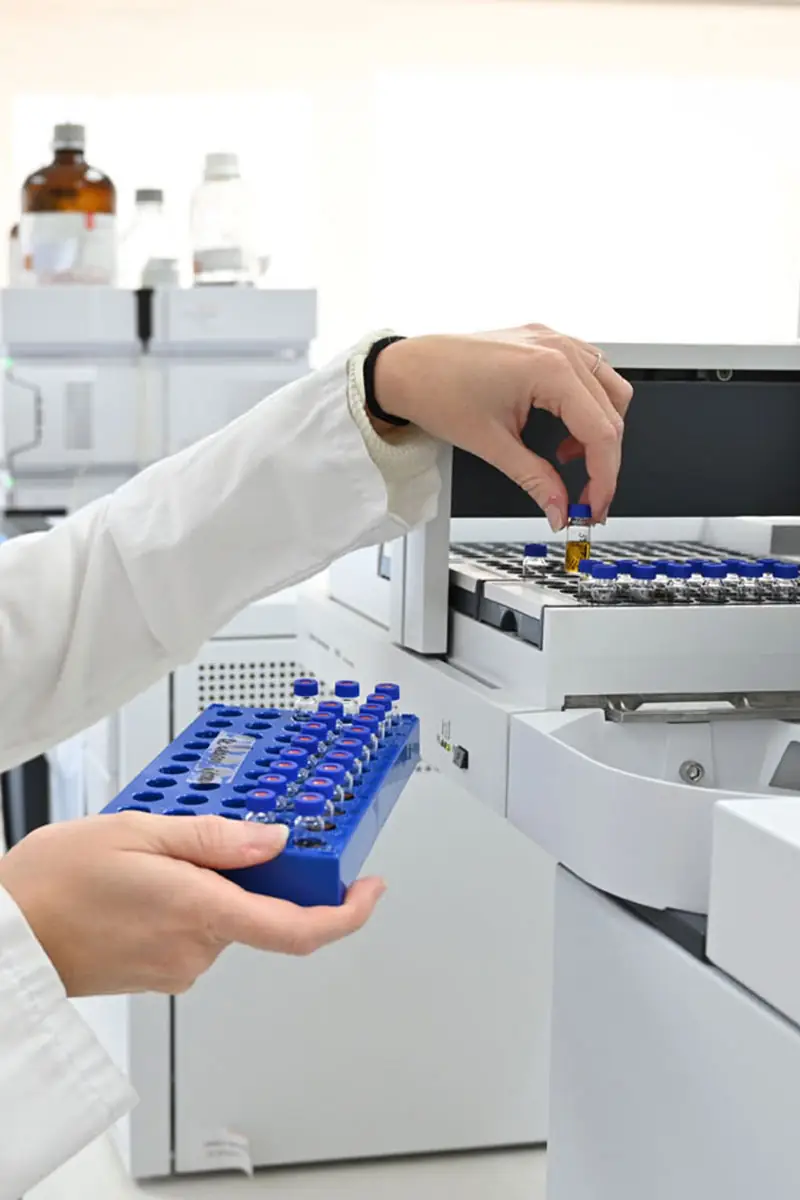By combining liquid and gas chromatography techniques with mass spectrometry detectors (LC-MS/MS and GC-MS/MS), a wide range of active substances can be analysed with high sensitivity, specificity and reliability in a variety of matrices.
Currently, we determine more than 655 active substances by multi-residue pesticide methods by GC-MS/MS and LC-MS/MS (with an accreditation level of 85% of the active substances included).
In addition, we perform the following specific methods of analysis: ethylene oxide, chlorate, perchlorate, ethephon, glyphosate, glufosinate and AMPA, maleic hydrazide, fosetyl-Al and phosphonic acid, acid pesticides (2,4-D, bromoxynil, dichlorprop, fluazifop-P, haloxyfop, ioxynil, MCPA, MCPB, triclopyr), bromides, chlormequat, diquat, mepiquat and paracuat, dithiocarbamates, in a broad spectrum of matrices.

